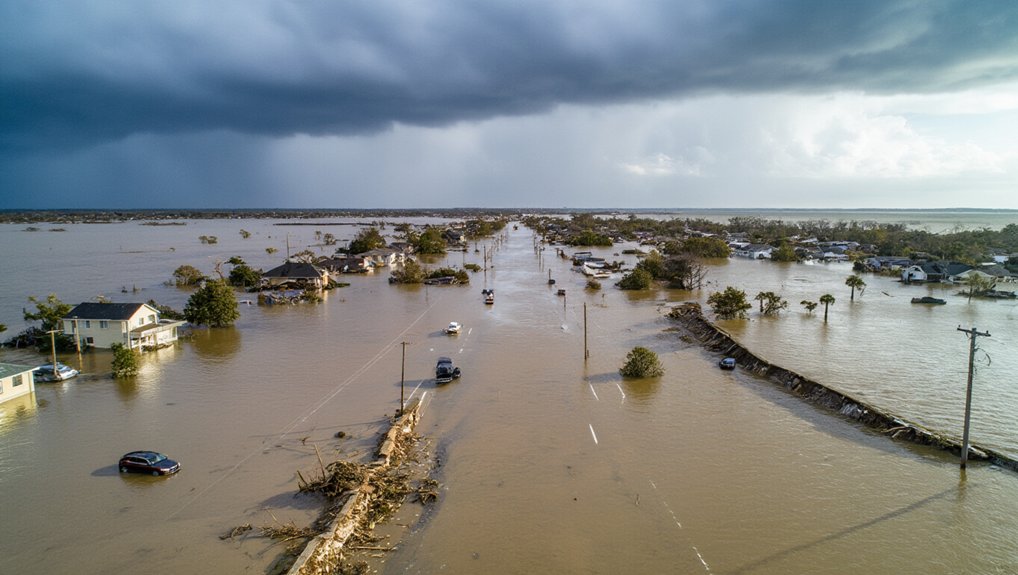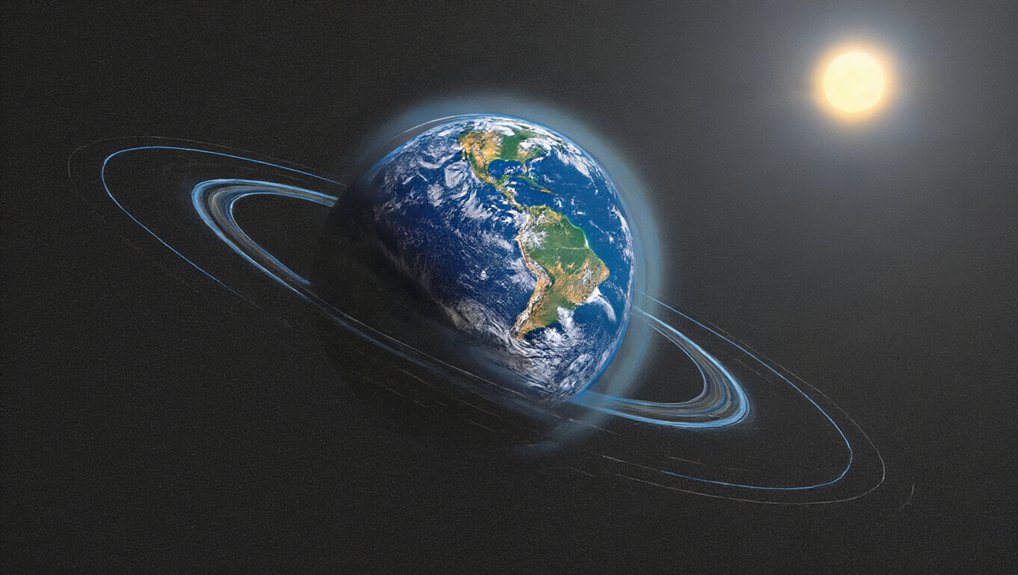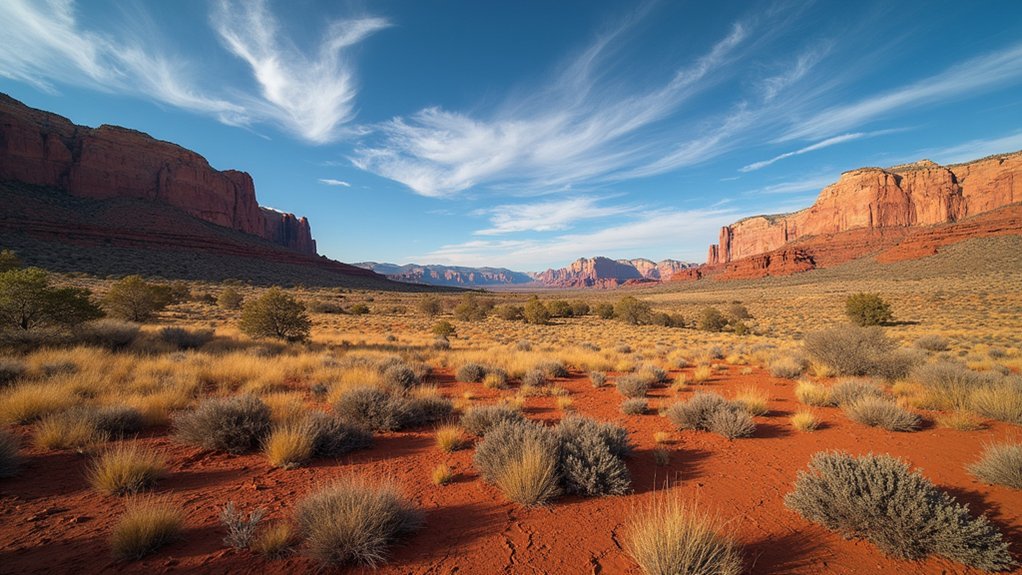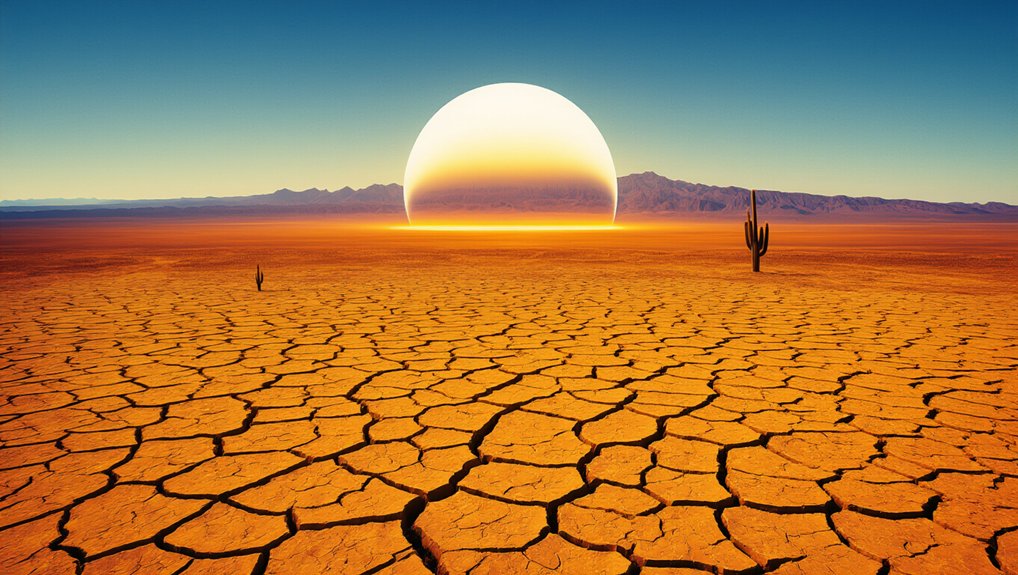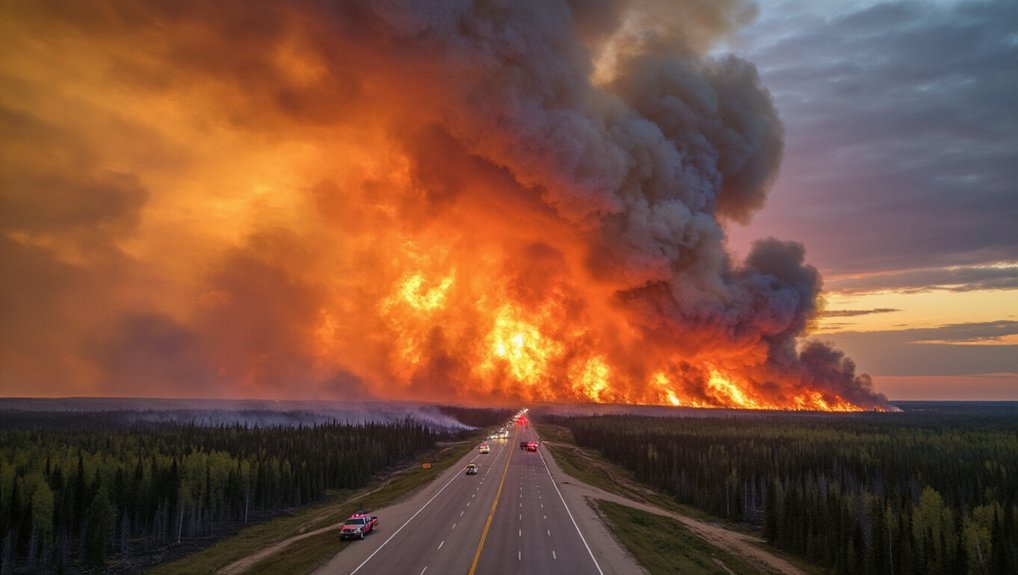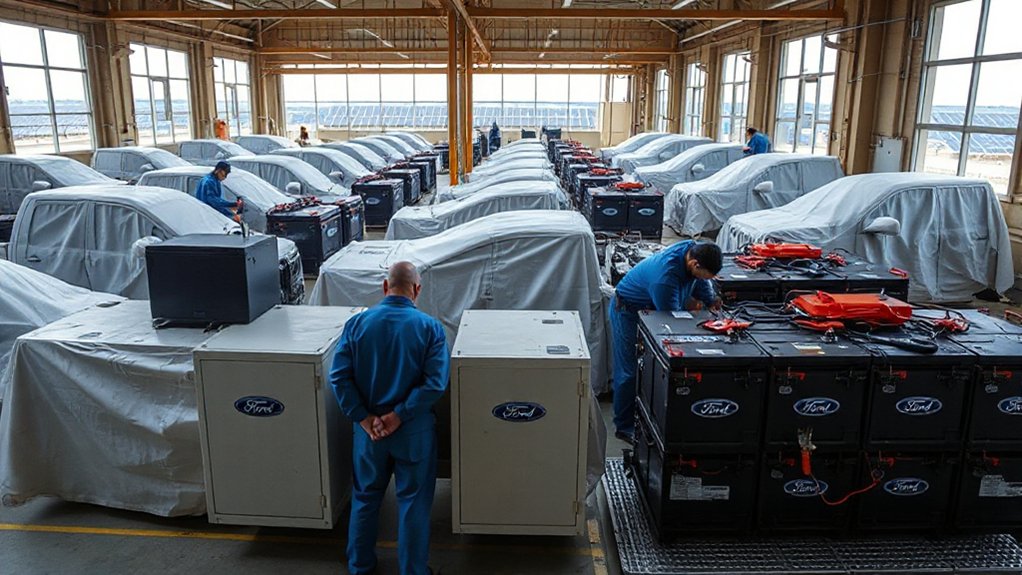While scientists have warned about the consequences for decades, climate change is now delivering its soggy promises with alarming regularity. The data doesn’t lie—extreme precipitation events have been increasing since the 1950s. Not a coincidence. Human activity is the likely culprit behind these intensifying downpours.
Turns out when you heat the atmosphere, it holds more water vapor—about 7% more per degree Celsius. More moisture, bigger problems.
The math is simple and terrifying. Approximately 2.5 million Americans in 1.4 million homes will face severe coastal flooding by 2050. Just around the corner, really. Florida, New York, and New Jersey top the danger list, but nobody’s special here.
By 2050, rising seas will threaten 2.5 million Americans—with Florida, New York, and New Jersey first in line for disaster.
Consider Houma, Louisiana, where 100% of its 33,000 residents will be at risk for century floods by mid-century. Good luck with those property values.
It’s not just hurricanes anymore. “Sunny day” flooding is becoming a thing—high tides spilling onto streets without a cloud in sight. Infrastructure that once seemed adequate now fails regularly. Seawalls, levees, drainage systems? Outdated. Emergency services? Overwhelmed.
And let’s not forget the strain on transportation, healthcare, and supply chains when roads turn into rivers.
Rising seas make everything worse. The margin between ocean and land is shrinking fast, transforming once-rare floods into routine events. Flooding now happens with less extreme conditions than before. No storm required. Coastal floods are occurring three times more frequently than they did just three decades ago.
Meanwhile, climate commitments aren’t matching reality. The U.S. talks big about 60% emissions cuts by 2035 and net-zero by 2050, but policy setbacks keep derailing progress. Global emission trends remain stubbornly off-track.
The social consequences speak for themselves. Millions face displacement as flood zones expand. Property values plummet. Insurance premiums skyrocket—if coverage remains available at all.
And surprise, surprise—vulnerable communities suffer most. Climate change doesn’t care about your politics, but its impacts sure aren’t distributed equally. How’s that for environmental justice?
Current Australian flood planning guidelines are woefully inadequate, based on only a 5% increase per degree of warming when research shows the actual figure could be up to 28% for hourly extreme rain events.
With fossil fuels accounting for 75% of emissions globally, transitioning to renewable energy sources is crucial for mitigating these worsening flood patterns.
References
- https://www.climatecentral.org/climate-matters/new-us-coastal-risk-map-and-analysis
- https://www.preventionweb.net/news/supercharged-thunderstorms-have-we-underestimated-how-climate-change-drives-extreme-rain-and
- https://www.wwno.org/2025-04-03/flood-risks-getting-worse-along-u-s-coastlines-new-analysis-shows
- https://www.ucs.org/resources/climate-change-extreme-precipitation-and-flooding
- https://www.epa.gov/climate-indicators/climate-change-indicators-coastal-flooding
